After crazy flooding and distinguished visiting chef, class finally happened again. It was a long day, but necessary as our class was canceled the day before.
First we finished our napoleons. Napoleons are finished with fondant (not like the type they use on ace of cakes) and are then given their distinct stripes with chocolate and a knife.
The fondant must be warmed to the proper temperature, too hot and it will recrystallize on your product producing a dull appearance. Do not heat past 105 F. The fondant will not be thin enough to work with, so you must thin it out with a simple syrup. Add a little at a time To figure out if the fondant is thin enough to pour out, lift up your spatula and make a figure eight shape with the dripping fondant, if the 8 shape disappears it is thin enough.
You must work quickly, so mise en place! You will need a paring knife, small or large offset, melted chocolate (only a little) in a piping bag with a larger than average hole.
Pour the fondant onto the top of the napoleon, being careful with your amounts, not too much but not too little.And with your offset, smooth out the fondant to the edges, if you have over flow, make it go off the sides that do not have the nicely piped filling.
Spreading out the fondant ontop
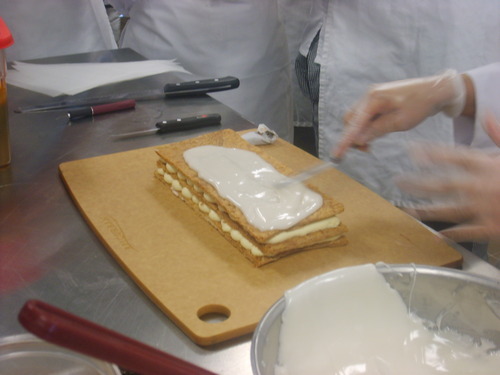
Again, working quickly pipe the chocolate horizontally (long ways) in stripes keeping them seperated somewhat
Piping the chocolate on

To create the tail design, drag your paring knife towards you, keeping even spacing and then drag the knife across the opposite way (away from you)
Creating the tail design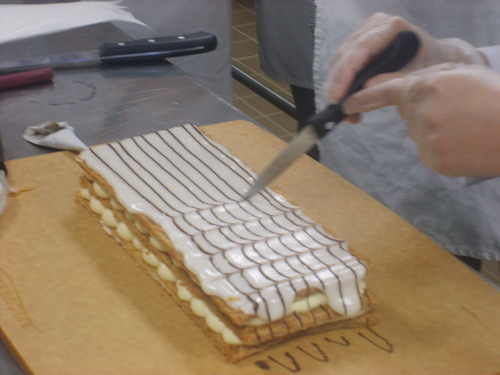
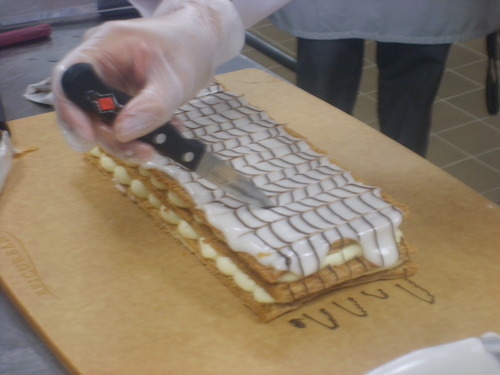
My finished Napoleon
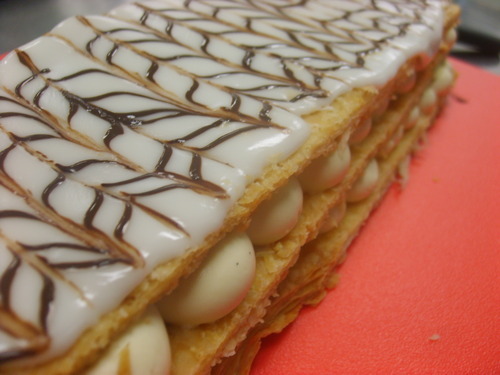
Pate a Choux, is a very basic and very french and (fairly) easy base for many desserts including creme puffs, eclairs, paris breasts and croquembouche (traditional french wedding cake).
To start: the fat, milk (or water) salt and sugar is brought to a boil. The flour is added to create a roux and then you cook it slightly (so it all comes together balled up and no lumps of flour are present).
The Roux

Add the roux to a mixer, and run the mixer to help release some of the steam and heat. Once the steam starts to dissipate slowly add the (TONS) of eggs, one at a time. Scrape the bowl occasionally and most importantly before the last egg. If the dough seems somewhat loose and is fairly easy to stir, the last egg is not necessary. However if it is stiff or has stiff spots, add the last egg. It is all about the ease of piping.
To create the eclair shape, use a medium sized round tip and use even pressure to fill out the desired space, do not press the tip down and make it flat.
Eclair Piping
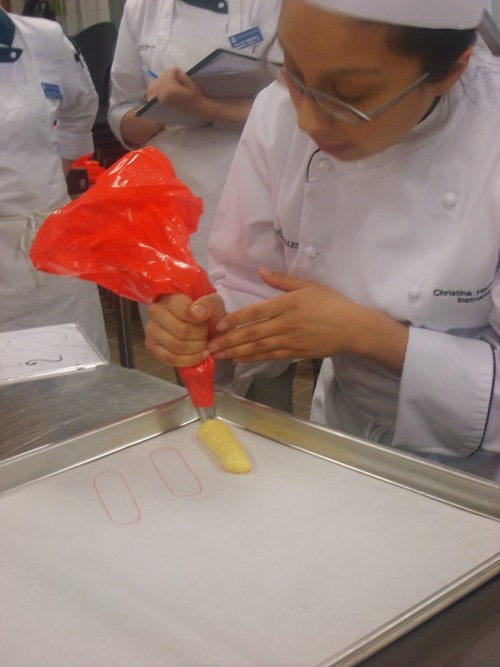
For creme puffs, use the same tube and again with even pressure, pipe straight down, moving the tip up slowly, filling in the desired size. If you get a little tip, smooth out with finger (profiteroles are the same procedure but with a smaller tip into a smaller size)
Piping large creme puffs
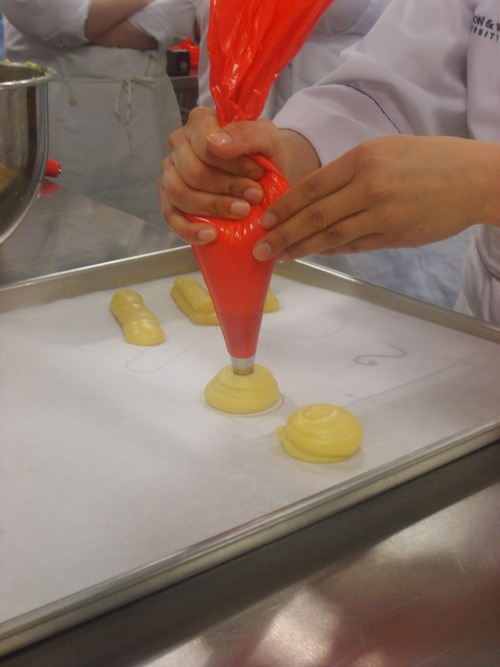
To pipe the swan body shape, do the same thing as above except at the end, stick the tip in slanted and pipe an eclair like shape outwards, exaggerating the shape. Let go of the pressure and pull the tip towards the shape, leaving a rounded edge.
Piping the swan bodies
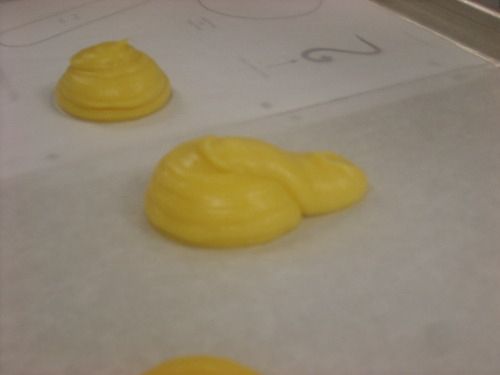
To pipe the paris brests, use a large star tip and pipe into an outline of a circle, overlapping the edges slightly. Lay crushed slivered almonds on top.
Paris Brest
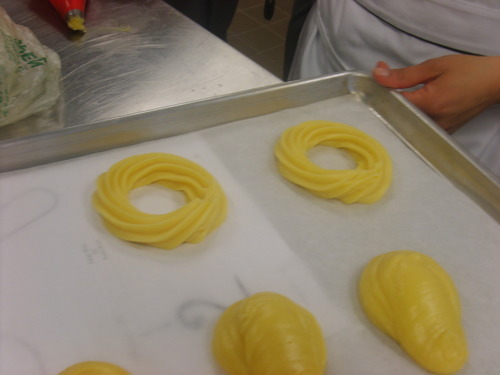
The final shape, is the head of the swan. Use the small tube tip (used for profiteroles) and pipe an S like shape, with a wider base than tip.
Swan head
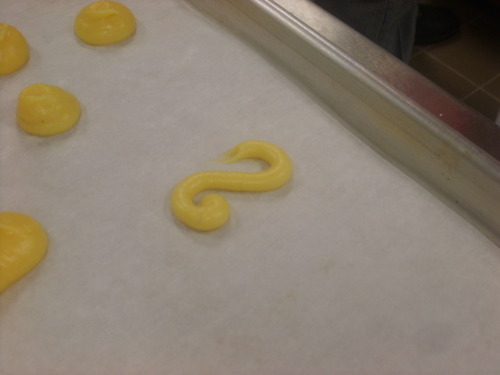
All were baked until very brown and no yellow was exposed.
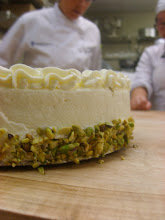
No comments:
Post a Comment